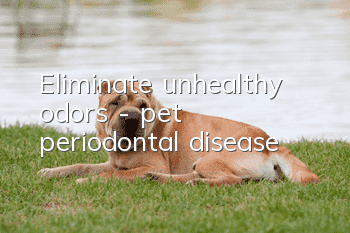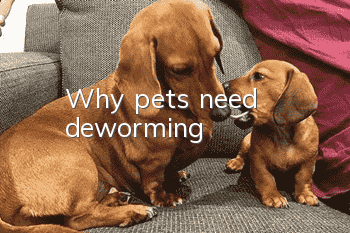Eliminate unhealthy odors - pet periodontal disease

Pet periodontal disease
Periodontal disease is the most common problem seen in small animal clinics today. When pets are 2 years old, 70% of cats and 80% of dogs will have varying degrees of periodontal disease.
In most owners’ minds, periodontal disease means bad breath and rotten teeth, but the problem goes far beyond that. Periodontal disease not only affects the local area of the mouth, but also further affects the disease and organs throughout the body.
Healthy Gums
Characteristics of healthy gums:
Teeth have no calculus
The gums appear light pink/coral pink without inflammation
There is bone filling between the tooth roots
The occurrence of periodontal disease
Periodontal disease starts from a substance formed by bacteria on the teeth: plaque. The direct effect of bacteria or toxins derived from bacteria can induce inflammation on the gums, and are complexly intertwined with factors such as the oral hygiene status, host resistance and immunity, and present different disease processes.
Initially, the gums will become red, swollen and congested, which is mild gingivitis. Mild gingivitis does not necessarily turn into periodontal disease. Because dental plaque can be easily removed by brushing your teeth, some of it will also be removed by friction when eating.
As the dental calculus thickens layer by layer, it will lead to more severe inflammation of the gums, and then the lower part of the crown of the tooth will also be invaded, and the connective tissue that "holds" the tooth will be destroyed. This is mild periodontal disease.
If gingivitis and dental calculus continue to irritate, it will evolve into periodontitis. In addition to affecting the flesh of the gums and surrounding connective tissue, periodontitis can also cause damage to the alveolar bone. Once the alveolar bone is destroyed, the entire gums will recede, exposing the tooth roots without enamel protection. At the same time, the teeth will begin to shake, leading to severe periodontal disease.
Prevention and Treatment
After understanding the occurrence and development of periodontal disease, we can conclude that pet periodontal disease must be prevented before it occurs, and the best preventive measure is to brush your pet’s teeth.
If your pet’s teeth already have calculus, many hospitals now have pet dental departments, and you can take cats and dogs with more serious cases to have their teeth cleaned.
I hope all owners will pay attention to pet periodontal disease. Periodontal disease not only causes pets to lose teeth. Inflammation of the gums can cause wounds, ulcers, and bacterial infections. The destruction of the alveolar bones makes the upper and lower jaw bones fragile; the gap between the mouth and nose can be It will form purulent tubes, affect the nasal cavity and compress the eye sockets; discomfort in the mouth will cause pets to be unwilling to eat, etc.
- The difference between canine distemper and parvovirus
- Symptoms and treatments for Teddy dog colds
- What happens if Alaska has diarrhea after giving birth to puppies? Here are some tips for you!
- What are the causes of Teddy's body odor?
- How to train Pomeranian to shake hands?
- How to train a Pekingese and what are the training methods?
- Dog gastroenteritis symptoms and care measures
- What causes ear mites in Bull Terriers? How to treat bull terrier ear mites!
- How to trim your dog’s nails? What a great way to trim your dog’s nails!
- What’s wrong with my dog’s long and thin worms?



